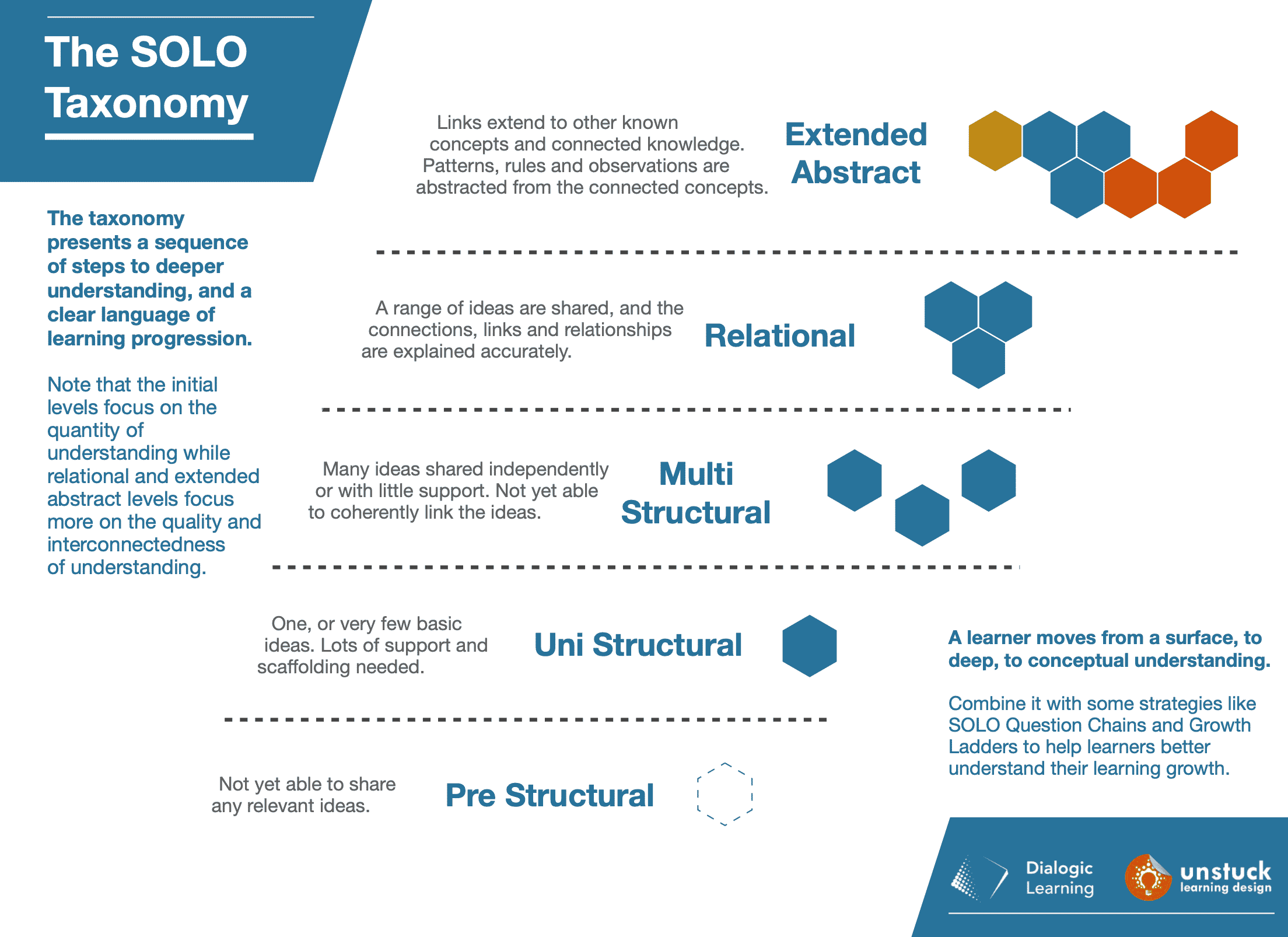One of the challenges we are attempting to solve at Tombolo is to create a shared language of learning.
How might we adopt an accessible language of learning, to unpack the levels of understanding in any learning task or assessment and scaffold the next steps in learning?
This is so that when we discuss learning progressions or the depth of understanding that a student has reached in a particular topic, we are all referring to the same thing. This is important because it means we can have common conversations, make reliable comparisons and give targeted support.
The SOLO Taxonomy is one framework for describing levels of understanding and is a promising model for Tombolo students and staff to use.
What is the SOLO Taxonomy?
The SOLO Taxonomy is a five-level model of understanding that was created by educational psychologists John Biggs and Kevin Collis. The acronym “SOLO” stands for the structure of the observed learning outcome.
Learning outcomes will vary depending on the task that the student is asked to complete, but might include examples like being able to explain a concept, solve a problem, or make an argument.
The five levels of understanding we experience are:
- Pre-structural – no ideas yet
- Uni-structural – one ideas
- Multi-structural – many ideas
- Relational – connect ideas
- Extended abstract – extend and transform ideas
Each level builds upon the previous one, with each level representing a higher degree of understanding.
Another way to think of this change in understanding is the progression from surface learning to deep knowledge and conceptual understanding.
The table below summarises the key characteristics of each level of understanding in the SOLO Taxonomy.

How does the SOLO Taxonomy help teachers and students?
The model helps educators and students track their learning and directs them on what to do next to build a deeper understanding. The SOLO Taxonomy can be used in several ways to support learning.
For teachers, the model can be used to:
- analyse the learning outcomes of a task or assessment, to understand the level of understanding that is being assessed
- design learning that targets a specific level of understanding
- select or create learning activities that are appropriate for the student’s level of understanding
For students, the model can be used to:
- understand the level of understanding that is required in a task or assessment
- identify the next steps in their learning
- reflect on their understanding of a concept or topic, and identify areas for further development.
SOLO Taxonomy provides a simple and robust way of describing how learning outcomes grow in complexity from surface to deep understanding
(Biggs & Collis)
Pre-Structural
This is the first stage – where students don’t really have any knowledge or understanding of the topic being studied. A student who is pre-structural will usually respond with ‘I don’t understand’.
Uni-Structural
This is the first stage – where students don’t really have any knowledge or understanding of the topic being studied. A student who is pre-structural will usually respond with ‘I don’t understand’.
Multi-Structural
Progressing from uni-structural to multi-structural simply means that the student knows a few facts about this topic – but is unable to link them together. So a typical response might be ‘I know a few things about this topic’ or ‘I have gathered some information about this topic’.
Relational
With relational, we are starting to move towards higher level thinking – students are able to link together and explain several ideas around a related topic. So a typical student‘s relational response might be: ‘ I can see the connections between the information I have gathered’.
Extended Abstract
The final and most complex level is extended abstract. With this, not only are students able to link lots of related ideas together, but they can also link these to other bigger ideas and concepts. So a student response at this level might sound like: ‘By reflecting and evaluating on my learning, I am able to look at the bigger picture and link lots of different ideas together’.